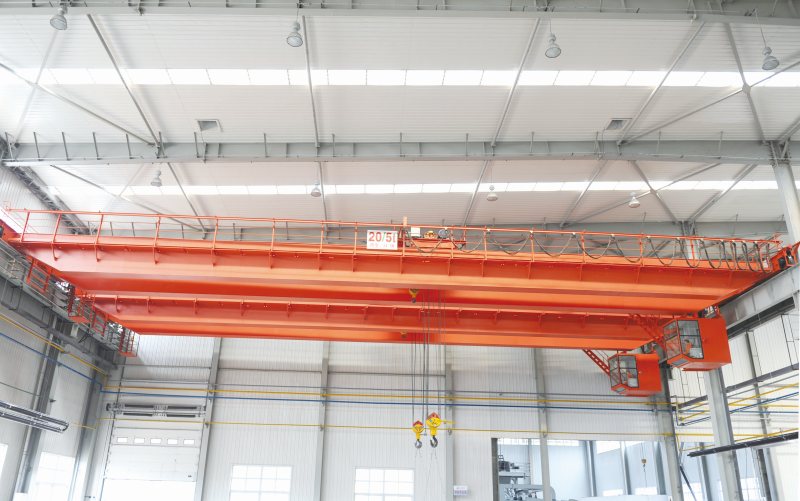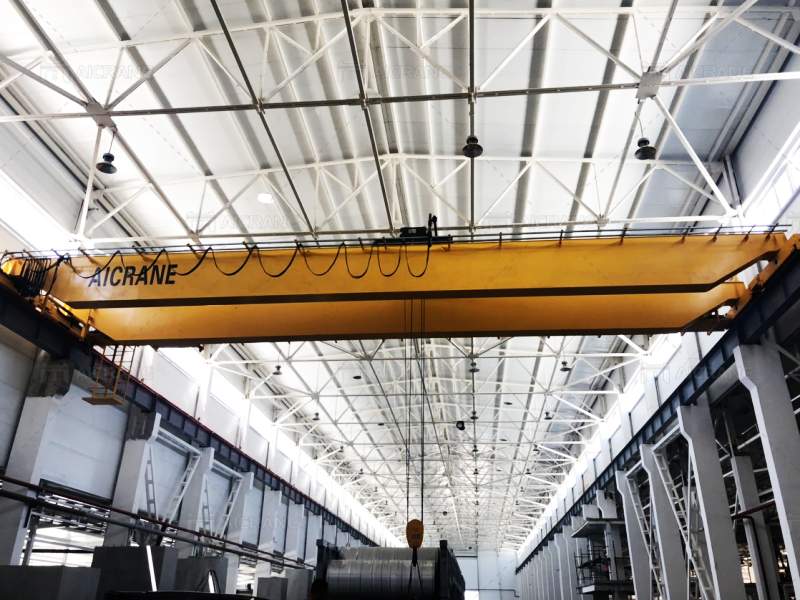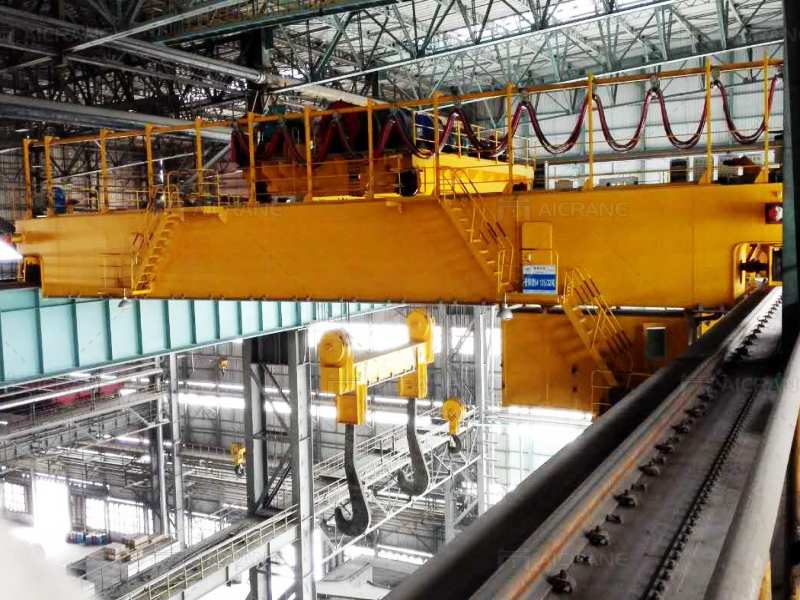In industrial settings such as manufacturing plants, warehouses, and construction sites, safety is a paramount concern. Workers are exposed to heavy lifting and material handling tasks, which, if not managed properly, can lead to accidents and injuries. This is where industrial bridge cranes play a critical role. These cranes, often referred to as overhead cranes, are designed to lift, move, and position heavy loads with precision, providing a safer and more efficient way of handling materials.
In this article, we will explore the role of industrial bridge cranes in creating safer work environments, the types of overhead cranes available, and how they contribute to improved safety. Additionally, we will discuss the importance of overhead cranes for sale, including the differences between single girder overhead cranes and double girder overhead cranes, and how businesses can choose the right crane for their needs.

What Are Industrial Bridge Cranes?
Industrial bridge cranes are systems that consist of a bridge supported by two runways. The hoist is typically located on a trolley that runs along the bridge. These cranes are used to lift heavy loads across the workspace, significantly reducing the risk of injury from manual handling. Unlike forklifts or other ground-based material handling equipment, industrial bridge cranes allow operators to lift and transport materials overhead, freeing up valuable floor space and improving overall site safety.
Industrial bridge cranes are widely used across industries, including manufacturing, automotive, construction, and shipbuilding, due to their ability to handle large, heavy loads with ease and precision. The main types of industrial bridge cranes include single girder overhead cranes and double girder overhead cranes, each offering distinct advantages depending on the specific needs of the operation.
How Industrial Bridge Cranes Improve Safety
1. Reducing Manual Handling Risks
One of the primary safety benefits of industrial bridge cranes is their ability to reduce the need for manual labor in handling heavy materials. Lifting and moving heavy loads manually can lead to strain injuries, particularly to the back, shoulders, and knees. Industrial bridge cranes automate these tasks, significantly reducing the likelihood of worker injuries related to lifting, bending, or carrying heavy items.
By using overhead cranes, workers are no longer required to carry or push heavy objects around the shop floor, eliminating one of the most common sources of industrial accidents. This leads to a safer working environment where employees can focus on their tasks without worrying about personal injury risks.
2. Eliminating Collisions and Material Spillage
Overhead cranes operate above the floor level, which prevents collisions between ground-based vehicles and heavy materials. In traditional material handling systems, forklifts or trucks often transport goods that can spill or fall. This poses a safety risk to workers who may be in the path of these objects.
With industrial bridge cranes, materials are securely lifted and moved along designated paths, preventing spillage and reducing the chances of accidents that can occur when objects fall or collide with workers. The precision of cranes ensures that materials are safely transported to their designated locations without the risk of mishaps.
3. Improved Visibility and Control
Industrial bridge cranes offer enhanced visibility and control for operators. Since the crane moves above the workspace, operators can see the entire area beneath them, allowing them to monitor their surroundings and avoid potential accidents. The use of modern control systems and automated functions also enables operators to move loads with greater accuracy, further minimizing risks associated with manual lifting or guiding heavy loads.
Additionally, operators of overhead cranes for sale can use remote control systems or automated sensors, allowing them to control the crane from a safe distance. This reduces the potential exposure to hazards while ensuring the crane is used efficiently.

Types of Overhead Cranes: Single Girder vs. Double Girder
When it comes to selecting an overhead crane, there are two main types: single girder overhead cranes and double girder overhead cranes. Each type has distinct features and benefits that can contribute to improving safety in industrial environments.
Single Girder Overhead Cranes
Single girder overhead cranes are typically used for lighter-duty applications. They have one horizontal beam (the girder) that supports the hoist and trolley system. These cranes are cost-effective and ideal for applications where the required lifting capacity is lower, usually under 20 tons.
The simplicity of single girder cranes means fewer moving parts, which can reduce the likelihood of mechanical failures. This makes them a good option for operations that require safe, reliable lifting with less maintenance. The relatively lower weight of the single girder also means that the crane system can be installed in smaller spaces, contributing to a safer working environment in confined areas.
Double Girder Overhead Cranes
Double girder overhead cranes are typically used in heavy-duty applications where higher lifting capacities are required, often above 20 tons. These cranes have two horizontal beams, which provide additional support and allow for greater lifting capacities and wider spans. The robust design of double girder cranes ensures that they can handle heavier loads with ease, making them ideal for large-scale manufacturing operations, shipyards, and warehouses that handle oversized items.
The additional stability and load-bearing capacity of double girder overhead cranes contribute to a safer work environment by ensuring that heavy materials are lifted securely. Their larger capacity also allows for greater flexibility in moving larger loads, reducing the risk of overloading or damaging the crane.

The Role of Overhead Cranes for Sale in Ensuring Safety
When considering overhead cranes for sale, businesses need to assess their specific safety requirements. Reliable concrete batching plant companies and crane manufacturers offer a wide range of cranes, each designed to meet different operational needs. It’s important to choose a crane system that aligns with the safety standards of your facility and the volume of material handling required.
Modern cranes come with various safety features, including:
- Overload protection to prevent lifting more than the crane’s capacity.
- Anti-sway technology to reduce the risks associated with swinging loads.
- Remote control systems for increased safety during operations.
- Enhanced load visibility through cameras and sensors.
Conclusion
Industrial bridge cranes play a crucial role in improving safety across many industries by automating material handling and eliminating risks associated with manual labor. By reducing the likelihood of injuries from heavy lifting, material spillage, and operational errors, these cranes contribute significantly to creating safer work environments.
Whether opting for a single girder overhead crane for lighter operations or a double girder overhead crane for heavy-duty lifting, selecting the right crane is essential for ensuring safety and improving overall efficiency. Investing in overhead cranes for sale from reputable manufacturers ensures that your business meets high safety standards, improves productivity, and creates a more secure working environment for all employees.